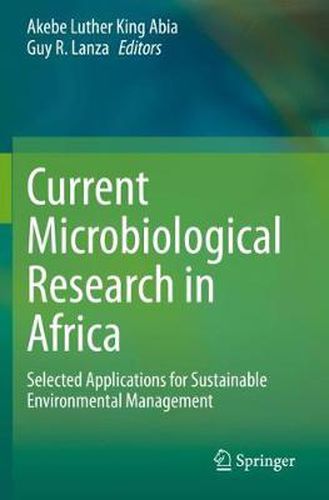Readings Newsletter
Become a Readings Member to make your shopping experience even easier.
Sign in or sign up for free!
You’re not far away from qualifying for FREE standard shipping within Australia
You’ve qualified for FREE standard shipping within Australia
The cart is loading…






This title is printed to order. This book may have been self-published. If so, we cannot guarantee the quality of the content. In the main most books will have gone through the editing process however some may not. We therefore suggest that you be aware of this before ordering this book. If in doubt check either the author or publisher’s details as we are unable to accept any returns unless they are faulty. Please contact us if you have any questions.
Scientific output in low- and middle-income countries is greatly challenged by numerous factors. This is particularly pronounced in sub-Saharan African countries, despite the continent being the world’s second largest and second most-populous continent, currently undergoing rapid economic growth. Financial constraints and unclear areas of focus when funding is available, are among the limiting factors, with the consequence being the development of inadequate policies, especially those relating to environmental protection and conservation. This 13-chapter book is a unique piece in the field of microbiology, designed to stimulate some research areas in Africa by illustrating interesting and informative examples of the current applied research agenda in environmental microbiology in selected countries within the continent. With authors from the North, South, East and West of Africa, the book touches diverse applied methods and approaches to meet the pragmatic needs faced by environmental microbiologists in Africa. Also included are topics on viruses, bacteria (including cyanobacteria), and protozoa, and their importance in disease. Sustainable agriculture and aquaculture, and eco-friendly oil and hydrocarbon bioremediation and degradation approaches are highlighted. Microbial involvement in different common indoor (e.g., household kitchens, latrines, and hospitals) and outdoor settings including air, soil, and water habitats, and their resistance to commonly used antibiotics, are described. Hopefully, the work presented here will stimulate the need for increasing modern training and funding initiatives to prepare African microbiologists to meet the challenges they face in African universities and research laboratories.
$9.00 standard shipping within Australia
FREE standard shipping within Australia for orders over $100.00
Express & International shipping calculated at checkout
This title is printed to order. This book may have been self-published. If so, we cannot guarantee the quality of the content. In the main most books will have gone through the editing process however some may not. We therefore suggest that you be aware of this before ordering this book. If in doubt check either the author or publisher’s details as we are unable to accept any returns unless they are faulty. Please contact us if you have any questions.
Scientific output in low- and middle-income countries is greatly challenged by numerous factors. This is particularly pronounced in sub-Saharan African countries, despite the continent being the world’s second largest and second most-populous continent, currently undergoing rapid economic growth. Financial constraints and unclear areas of focus when funding is available, are among the limiting factors, with the consequence being the development of inadequate policies, especially those relating to environmental protection and conservation. This 13-chapter book is a unique piece in the field of microbiology, designed to stimulate some research areas in Africa by illustrating interesting and informative examples of the current applied research agenda in environmental microbiology in selected countries within the continent. With authors from the North, South, East and West of Africa, the book touches diverse applied methods and approaches to meet the pragmatic needs faced by environmental microbiologists in Africa. Also included are topics on viruses, bacteria (including cyanobacteria), and protozoa, and their importance in disease. Sustainable agriculture and aquaculture, and eco-friendly oil and hydrocarbon bioremediation and degradation approaches are highlighted. Microbial involvement in different common indoor (e.g., household kitchens, latrines, and hospitals) and outdoor settings including air, soil, and water habitats, and their resistance to commonly used antibiotics, are described. Hopefully, the work presented here will stimulate the need for increasing modern training and funding initiatives to prepare African microbiologists to meet the challenges they face in African universities and research laboratories.